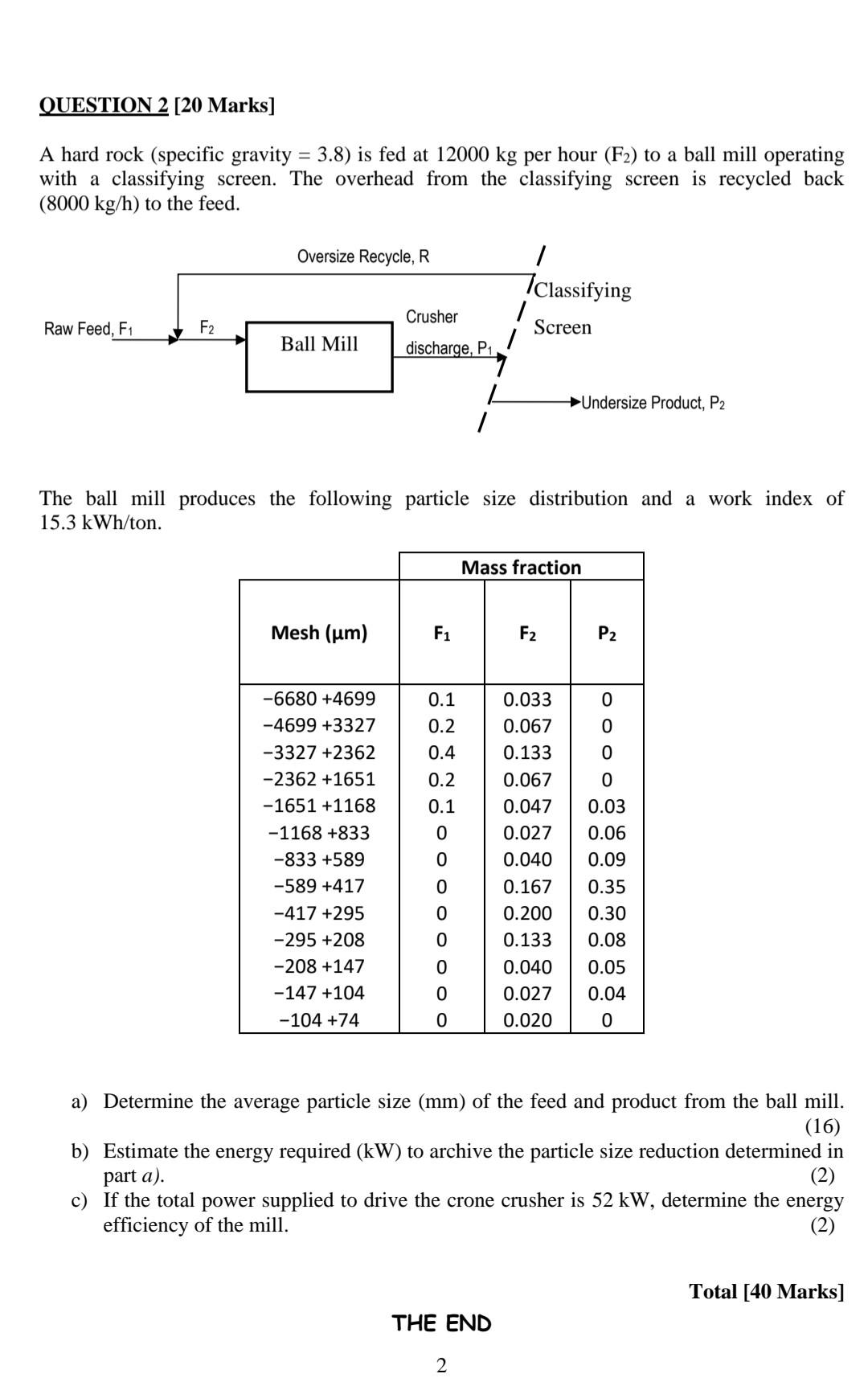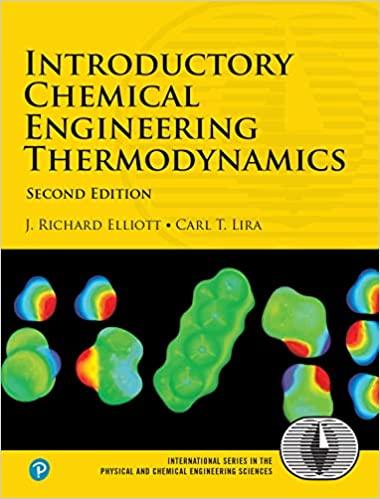Answered step by step
Verified Expert Solution
Question
1 Approved Answer
QUESTION 1 [20 Marks] Calcite is a carbonate mineral and the most stable polymorph of calcium carbonate (CaCO3). It is a very common and widespread


QUESTION 1 [20 Marks] Calcite is a carbonate mineral and the most stable polymorph of calcium carbonate (CaCO3). It is a very common and widespread mineral with highly variable forms and colours (Figure 1). Calcite is best recognized by its relatively low Mohs hardness (3) and its high reactivity with even weak acids, such as vinegar, plus its prominent rhombohedral cleavage in most varieties. An X-ray crystallography analysis showed the presence of mixture of particle sizes as shown in Table 1. From the tabulated data, determine the specific surface (g/m) of the mineral. Figure 1. Symmetrical three-dimensional solid shape. Density equation (kg/m?): P = 1 0.6 0.4 X y where: y = 765 and x = 1200 Table 1. Particle size distribution. ISS Mesh Mass retained (9) ISS Mesh Mass retained (g) -100 +85 0 -20 +18 26 27 -85 +80 -80 +70 -70 +60 -60 +50 28 33.5 324 315.5 120 182 -18 +15 -15 +12 -12 +10 40 26 27 -10 +9 -9 +8 -8 +6 -6 +5 -50 +40 -40 +35 -35 +30 -30 +25 -25 +20 78 28 29 79 39 -5 +4 69 29 1 QUESTION 2 [20 Marks] = A hard rock (specific gravity = 3.8) is fed at 12000 kg per hour (F2) to a ball mill operating with a classifying screen. The overhead from the classifying screen is recycled back (8000 kg/h) to the feed. Oversize Recycle, R / Classifying / Crusher Raw Feed, F1 F2 Screen Ball Mill discharge, P1 Undersize Product, P2 / The ball mill produces the following particle size distribution and a work index of 15.3 kWh/ton. Mass fraction Mesh (um) F1 F2 P2 0 0 0.1 0.2 0.4 0.2 0.1 0 0 0 -6680 +4699 -4699 +3327 -3327 +2362 -2362 +1651 -1651 +1168 -1168 +833 -833 +589 -589 +417 -417 +295 -295 +208 -208 +147 -147 +104 -104 +74 0 0.033 0.067 0.133 0.067 0.047 0.027 0.040 0.167 0.200 0.133 0.040 0.027 0.020 0 0.03 0.06 0.09 0.35 0.30 0.08 0.05 0.04 0 0 0 a) Determine the average particle size (mm) of the feed and product from the ball mill. (16) b) Estimate the energy required (kW) to archive the particle size reduction determined in part a). (2) c) If the total power supplied to drive the crone crusher is 52 kW, determine the energy efficiency of the mill. (2) Total [40 Marks] THE END 2
Step by Step Solution
There are 3 Steps involved in it
Step: 1

Get Instant Access to Expert-Tailored Solutions
See step-by-step solutions with expert insights and AI powered tools for academic success
Step: 2

Step: 3

Ace Your Homework with AI
Get the answers you need in no time with our AI-driven, step-by-step assistance
Get Started


